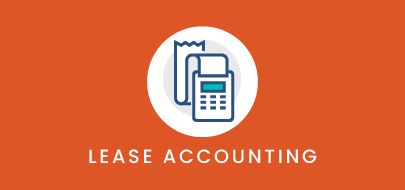Course Description
This course covers the basics behind creating transition calculations in the lease accounting module to help you gain compliance with the newest accounting standards published by FASB, IASB and GASB. By the end of this session, you will learn about the various inputs of a lease accounting calculation and how to create a transition for an Operating and Capital Lease.
Intro to Course
Welcome to training with VLU.This course is designed to cover the basics behind creating transition calculations in Visual Lease’s lease accounting module. Our goal is to ensure you have what you need to gain compliance with the newest Accounting standards published by FASB, IASB and GASB.
By the end of this course, you will learn about:
· the various inputs of a lease accounting calculation
· How to create a transition for an Operating Lease
· How to create a transition for a Capital Lease
After completing you transition process, please also view the Lease Accounting: New Calculation course, where we cover the process of creating new calculation in the accounting module within Visual Lease.
Please take a moment to review the agenda. If you are looking for a specific topic, feel free to navigate to the corresponding timestamp.
To get accurate information out of Visual Lease, we have to ensure we put complete and accurate data into it. That is especially true for lease accounting calculations, which pulls inputs from various fields within your lease record. The integrity of those inputs is critical to producing accurate calculations. Let’s review some together.
Before we get started it is important to note that the options shown on this screen may be different based on your configuration.
First, let’s visit the General Tab. In particular, the Record Type, Commencement and Expiration Dates are key inputs.
Record types will establish whether this is treated as a Lessor or Lessee record and may also affect other treatments depending on your configuration.
The Commencement and Expiration Dates usually serve as the default start and end dates to your lease accounting calculations,
Make sure to review and confirm these fields before building your calculations.
Now, let’s take a brief look at your financial entries. Let’s click on the Financials Tab. Underneath that, you’ll see a series of sub-tabs, you’ll look for Entries.
Financial entries are a key input into your accounting calculation. At a minimum, this could include base rent, but may include other items, including but not limited to end of lease costs. As a minimum you must enter data from your transition date forward, but we recommend a full recounting of the financial history as a complete audit trail.
Finally, let’s take a look at your lease options. You can find these in the Clauses tab..If they are marked as likely to be exercised, Visual Lease will include the option period when creating the calculation. You must also have financial entries created for the option period.
Now that we reviewed key information throughout the lease record, let’s look at how to generate a lease accounting calculation from the Lease Accounting Module. This video will show you how to create a Transition Calculation, specifically from an Operating calculation.
You can find all of your created and stored calculations by selecting the Financials tab and then selecting lease accounting.
Let me show you around. All lease accounting actions can be completed by using the Create Calculations button on the top-right of the screen or by clicking here to edit existing calculations.
But before we explore that further, let me show you the other areas of this module.
The screen breaks into various sections, such as the lease schedule and journal entries summary for the selected calculation. Additionally, in the left sidebar, the Accounting Information section contains basic lease information that will impact all calculations on the lease.
The Accounting Information section on the sidebar, reflects standard data based on the lease record type. For example, the Short-Term Lease classification applies to the record type, not the individual lease, and so it cannot be changed here. Low-Value lease status, as well as the accounting standards, may be changed individually.
The values in the middle are initially set by Record Type but can be adjusted to reflect the specifics of this individual asset. Note that this information is not date specific, though. Enter the initial values here. Later, when we create a calculation, you will see where this data is updated to reflect conditions at that time.
Now, let’s walk through how to create a basic lease accounting calculation. Once you understand how this works, you will easily be able to explore more complex scenarios and calculations in this module.
To get started, click Create Calculations.
As you can see, you can create a new calculation, or you can create a transition calculation. A new calculation runs from the commencement date of the lease. A transition calculation is the method that you’ll use when the lease already exists on your books under the former accounting standard. In this course, we will focus on creating a transition calculation.
For now, lets select Transition Calculation. You will see the Accounting Wizard appear, which will walk you through each step of creating the transition calculation.
If your account has existing calculations under the old standards, whether they are simple straight-line calculations or full Capital Lease schedules, you can see them here if the Accounting Standard Calculations button is selected.
Select the check boxes next to the calculations to include in the transition.
Your account might instead have calculations created with the legacy Straight-Line Rent module that you need to transition. If so, select the Straight-Line Rent Calculations button and select the calculations that appear.
Another possible situation is that you have no existing calculations in Visual Lease. You can then create an unlinked transition calculation by not selecting any calculations here.
Then, you will specify a transition date.
Please note: Your platform may be preconfigured to prevent this date from being changed,. Since this is a database used for training, I have permitted it to be changed. Changing it may change the list of available calculations. If you don’t have that data in Visual Lease already, you will have the ability to enter any data later. You do not have to recreate your FASB 840 or IAS 17 schedules in order to create a transition calculation.
Next, I must identify how this lease was treated in the old standard, as each type of lease has different data to bring forward. In this case, as I am bringing in an 840 Operating schedule, the platform has preselected Operating.
Next, specify the accounting standard you wish to transition to. Since I’m transitioning an existing 840 calculation, the platform has preselected 842.
Then, you will specify the calculation status.
Pending status is typically what I recommend using at first, because that gives you the ability to review the lease schedules and journal entries before you activate the calculation. As a pending calculation, data will not flow through to your Accounting Feed, so you can feel confident that your calculation is set up correctly. You can then easily make it active.
Active is used to identify live calculations, which will enable them to flow through to your ERP system.
We also have the ability here to create hypothetical calculations. If you’re looking at various scenarios and want to do some “what if” analyses, but don’t have any intention of those ever being live calculations, hypothetical is a good way to segregate those calculations.
The Use Schedule Upload checkbox enables you to upload precalculated schedules (using a provided template) pertaining to rare scenarios that Visual Lease currently does not calculate, so they can be compared to Visual Lease-calculated schedules. You also have the option to upload the corresponding journal entries in the same template or have journal entries generated from the provided schedule. The uploaded schedule and journal entries will flow to the appropriate GL feeds. When selecting this option, you will have the opportunity to upload the template in step 6 of the wizard.
Once you make your selections, select next to arrive at the next step of the wizard.
Step 2 will allow you to specify a calculation name and period. We recommend that you name your calculation to make it easily distinguishable. In this case I will simply name the calculation as “Transition Test”.
The platform will use the Transition date as the start date. The expiration date will be the end date, unless any options are set as Likely to be exercised.
Check “send to accounting feed” if you want the information sent to the ERP system when the status is moved to Active. Prorate Lease Payments typically will not have an impact on your numbers, but it applies in the rare event of the cash payment and accounting schedule prorating a period over different durations. Unchecking this box would prevent a double proration.
Step 3 of the wizard is where we get the opportunity to input values from the old standard that are not housed in other areas of the lease record. These will have an impact on your calculation.
The fields shown here, and the ability to edit them, depend on what has already been set in the wizard and the calculations being transitioned, if any.
Since we are transitioning an 840 Operating calculation, the Opening Deferred Rent Balance shows the final deferred rent balance just before the transition date. This is brought in from the existing schedule, which is critical to establishing the proper straight-line rent amount.
You only enter a Probable amount Owed at the end of the lease if you have some reasonable expectation of that amount. I’ll cover in more detail when we cover transitioning Capital Leases.
Remember that Residual Value Guarantees are handled differently under the new standards. If the guarantee exists, enter it in the RVG box.
Other values to include are typically amounts paid or received prior to the start of this schedule.
Initial Prepaid Rent entered here is not any original prepaid rent, but the amount prepaid as of the transition date, and will be applied to the first period’s payment and thereafter until the entire prepaid amount is reached.. Opening Accrued rent balance is any rent due from a prior period that will be paid after transition, but that catch up payment will need to be in your financial entries.
Any unamortized lease incentives and initial direct costs are also entered here. Everything in these new accounting schedules standards is based off of the time value of money.If you’re accelerating those payments by one or even a few months that’s going to have an impact on those assets and liability values; go ahead and take advantage of that.
In addition, note that you have the ability to indicate whether or not lease payments are consistently prepaid one month prior. If you’re in a situation where you’re sending paper checks, and you mail them before the end of the prior month to ensure that it reaches the landlord by the first, you can go ahead and select Yes.
Let’s go ahead to step 4, where you enter the discount rate.Your platform can hold a table of discount rates based on organization, country, currency, lease term, etcetera.The platform will automatically look at all of that information and then select from the table the appropriate rate. But you don’t have to use the number that the platform has come up with, you could select something different.If you do override the populated default rate, the platform will ask you for an override reason. We’re always building an audit trail for any time that you’re making a variation from the standard or default treatment.I’m going to just take us back to our default rate.
Sometimes a lease may explicitly state a discount rate. This is rare, but you may see this happen with vehicles or equipment. If so, you must use that defined rate and enter the information here.
In step 5,we select which financial entries are going to be included—and how they are going to be included—in the calculation.
Each entry listed here will be ones that exist on this lease within the start and end date of this calculation (specified in Step 2). Those flagged as Lease Payment will be treated as lease payments, the basis for the schedule; at least one such entry is required. I also have a payment that’s being treated as a variable expense.It will flow through to my disclosure statements, but it is not part of the basis of calculating the asset and liability schedules.
By default, the system will only show those calculations that factor into accounting schedules or reporting, but I can check the Show Excluded box to see all the other payments set to be excluded from this calculation as a default.
While I can override the default by changing the selection, I’m just going to keep the payment entries and treatment types consistent with my defaults.So I accept this and move on to the final step.
Step 6 is the lease type test. Here’s where, in the FASB 842 world, we apply the lease type test to determine whether it’s an operating or a finance lease. Questions one, two, and five are subjective.You must make the determination whether it’s a yes or no and provide a reason why you selected yes.
Questions three and four are objective value questions: 75% of the useful life or NPV more than 90% of the fair market value. These are automatic calculations. These values are adjustable, consistent with the revised guidance under ASC 842.
If any of the five questions answer YES, the lease is determined to be a Finance Lease, or a Capital Lease under one of the older standards. It is possible to override the calculated value for these questions, and also possible to just override the type. For audit trail purposes, any time you do so, you will be asked for an Override Reason.
Please note, for IFRS16 there will be fewer questions to answer, since all such calculations are considered Finance.
We should spend a minute here talking about fair market value and useful life. The useful life for this lease is 39 years because this is a real estate lease.We use 39 years because that’s the amortization period for real estate in the US Tax code.You may have set up other default values for other Record Types. Regardless of the default value, you should enter the life specific to the asset. It’s important for the Lease Type Test, and also used for determining amortization of assets purchased at the end of the lease.
In a real estate transaction, you’re often going to leave the Fair Market Value field blank. The rule is if it’s difficult to ascertain the fair market value of the distinct asset, you don’t have to fill that in. For example, if this were an office lease, say it’s for the 50th floor of the Empire State Building, you can’t just buy the 50th floor.You would have to buy the whole building.I can’t determine what the value of that single floor of the building is, so I would just leave this fair market value here as a blank or 0.
Let’s go ahead and save this transaction.
Once this is saved, you will see the rest of the sections on the Lease Accounting Page appear.
The details of this calculation appear in the Calculations section.
If I select “Show More” I’ll see all the inputs that went into creating this individual schedule.
You can also change the view by clicking on the pivot icon, here. This will switch the columns and rows giving you a list-type view that will not require as much horizontal scrolling.
Please note: The calculations section will default to the list type view.
In this view, the action menu will be located here, and is where you will be able to perform actions such as create a remeasurement calculation.
If I select “Show More” I’ll see all the inputs that went into creating this individual schedule.
The lease schedule created will contain all the necessary detail including the lease payments, straight line rent, right of use asset, amortization, interest and liabilities.
The schedule is then the basis of creating the Journal Entry Summary at the bottom of the page. The Journal Entries provide the linkage to feed these details to your ERP system.
Please note, though, that the Description given here is NOT the GL account where the value will be posted, it is merely a system description. During your platform configuration, mappings were created which consider the description, the record type, the accounting standard and lease type, and direct the values to the appropriate accounts in your General Ledger.
You can filter your journal entries by year by clicking here and selecting a year, or multiple years, or by entering a date range.
Unlike operating leases, Capital Leases had liability and asset balances under the old standards. This means they have different data to bring forward into a transition calculation. For comparison purposes, we will use the same lease record but we will treated it as a Capital Lease.
The wizard opens just the same way it did for the Operating calculation. The first step remains to specify the transition date. I will select a Capital Lease calculation.
Step 1 is identical to the Operating calculation procedure, except you can see the platform determined the treatment was Capital. Step 2 will also be the same.
Step 3 looks different, because this portion of the wizard is dynamic. These four Capital Lease fields are automatically provided here since I’m transitioning an existing calculation. However, you would need to provide these figures if you were creating a standalone Capital transition. Please note, that the Capital Asset Value at Transition is a GROSS value. Capital Lease Asset Accumulated Depreciation is recognized as a contra-asset account. Both are necessary. The Net Capital Asset Value is never directly entered, it is derived from the prior two entries. Liability Value is always brought in at its amortized value, though.
The Residual Value Guarantee is handled differently in FASB 842 than it was in FASB 840. FASB 842 requires us to start the liability balance at the same amount the balance was previously under FASB 840.
The liability balance under 840 included the total amount of the residual value guarantee so that must get brought forward here.
When creating the transition, you can fill-in the residual value guarantee here, just like you would in an operating lease, but the results are going to be different.
The result is going to be a lease which does not completely amortize at the end of the term. Instead, there will be a balance left. This balance is the residual value guarantee.
It is expected that you will have that discrepancy at the transition. Our accounting partners advise keeping this balance on the books until you have some certainty about any final payment.
At some point in the future, you will need to recognize whether you’re likely to pay that amount or not, and perform a remeasurement at that future date, once you have some certainty
Continue through the rest of the wizard just as you would for an Operating Lease. The platform will run the same Lease Type Test in step 6 as a new calculation. This evaluation is independent of the treatment given the lease in the prior standard. While it is expected that the criteria which led to the lease being considered Capital previously would lead to it being considered Finance today, different results are possible. When finished, click SAVE and your schedule is created.
This concludes our course on the basics behind building a transition calculation. We’ve reviewed the data required to create your schedules,and learned how to create a transition calculation within the lease accounting module for both an Operating and Capital Lease.
Remember…
· Your system may be preconfigured to prevent transition dates from being changed
· Capital Leases had liability and asset balances under the old standards. This means they have different data to bring forward into a transition calculation
· Our accounting partners advise leaving the residual value guarantee field blank until you have some certainty as to what amount might be paid, if any
· Finally, remember to also view the Lease Accounting: New Calculation course, where we cover the process of creating new calculations in the accounting module within Visual Lease.
Thank you for attending this course. Any questions, suggestions, or feedback may be sent to Support@visuallease.com.
Course Features
- Lecture 0
- Quiz 0
- Duration 10 weeks
- Skill level All levels
- Students 0
- Assessments Yes







